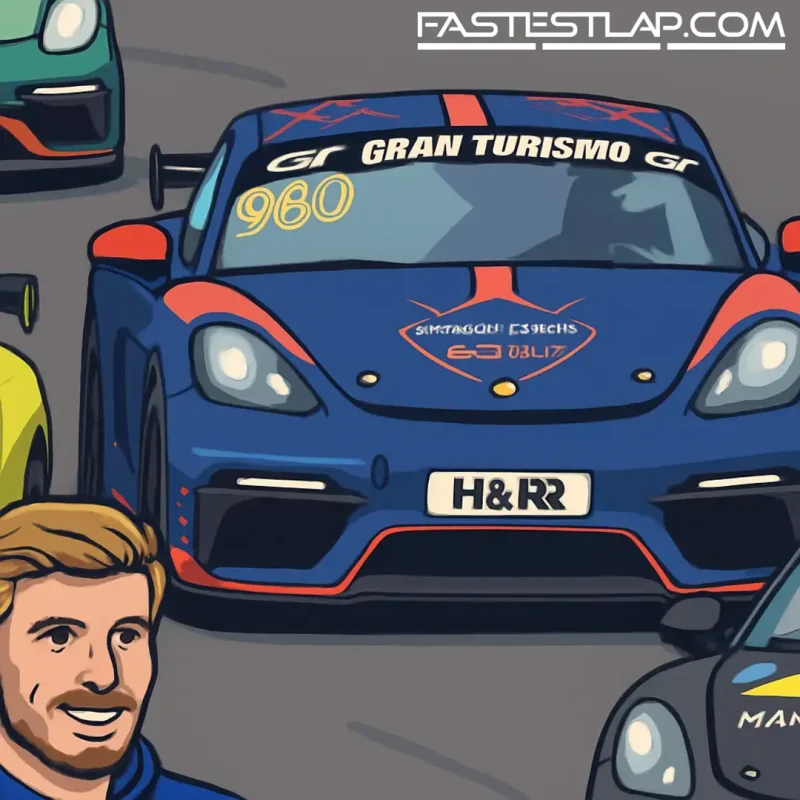Glock backs “no-exceptions” call as Verstappen earns Nordschleife Permit A the hard way
While most of the grid took a breather between Monza and Baku, Max Verstappen spent his off‑weekend doing something far less glamorous: sitting a written test and taking instruction laps at the Nürburgring. The four-time F1 World Champion put himself through the full DMSB process to qualify for a Permit A on the Nordschleife — and yes, that meant no shortcuts.
There was noise, of course. Ralf Schumacher called it “embarrassing” that Germany’s governing body didn’t simply wave Verstappen through. But Timo Glock, who’s done the same dance himself, wasn’t buying any of it.
“Once you start making exceptions, many more will soon be waiting,” Glock said. “The Nordschleife is different, the races are different. It’s good the rules apply to everyone.”
Verstappen began with the classroom work on Friday, cleared the written exam, and headed out behind instructor Andreas Gülden for sighting laps. With Permit B in his pocket, he jumped into a Porsche Cayman GT4 for the Cup3 race, sharing with Chris Lulham. Seventh on the grid, seventh at the flag — tidy, if not headline-grabbing. He logged 14 laps, just shy of the mileage DMSB requires for the top-tier sign‑off.
Then came the wait. Eventually, the committee put its stamp on it: Permit A approved.
It’s easy to say “he’s Max Verstappen, let him race,” but the Green Hell isn’t your standard racetrack. It’s 25 km of booby traps, blind crests and code-60 pockets, with multi-class traffic that doesn’t obey the tidy choreography of F1’s blue flags. That’s exactly why Glock sided with the officials. “I asked myself the same questions when I had to get my license,” he said. “Only then did I understand why it was necessary. You see both sides, and that’s a big advantage.”
Verstappen, who’s never hidden his itch for GT and endurance racing, sounded like a kid who’s just discovered a new playground. “I’m happy it all went smooth, and I got my DMSB Permit Nordschleife,” he said via his website. “It was good to drive stints with traffic, both with faster and slower cars. We had code-60, double yellows and yellow flags. I drove in the wet, the dry and in mixed conditions. I’ve gained experience in where the grip is and isn’t and completed a start procedure.”
He also couldn’t resist looking ahead: “To contest a 24-hour race here, in a GT3 car, would be amazing.”
Christian Klien, another ex‑F1 hand with a healthy respect for the Ring, liked what he saw. “Some F1 drivers are only interested in F1,” he said. “Max is different. He’s into it, he’s got GT3 experience, and he jumps in whenever he can. It’s real door-to-door racing and the competition is full of specialists.”
If you follow the fine print, Permit A doesn’t just certify speed; it’s an assurance that the driver understands the Nordschleife’s vocabulary — where to pass, where not to, what a code-60 zone really means when you’re threading a car through Hocheichen in greasy conditions. Verstappen got a sample platter of all of it. The Cayman GT4 stint won’t make the highlight reel, but that’s missing the point. This was about earning trust on the world’s most unforgiving circuit, not lighting up the timing screens.
The plan, as it stands, is for Verstappen to return in late September for an NLS run in a Ferrari 296 GT3 — a neat twist, given his F1 day job and the modern trend of drivers sticking to single-seaters. Glock, for one, loves the cross‑pollination. “Max is a poster child for the sport. Some gentlemen can learn something from that, especially when you see how much love and energy he puts into it. I admire that.”
There’s a broader takeaway here. The DMSB sticking to the rulebook wasn’t a slight; it was a statement. The Nordschleife doesn’t care about your CV. If anything, Verstappen’s willingness to queue up with everyone else does more for his reputation than a bureaucratic free pass ever could.
He came to the Green Hell, took the test, got the stamp — and now, the real fun can begin.




